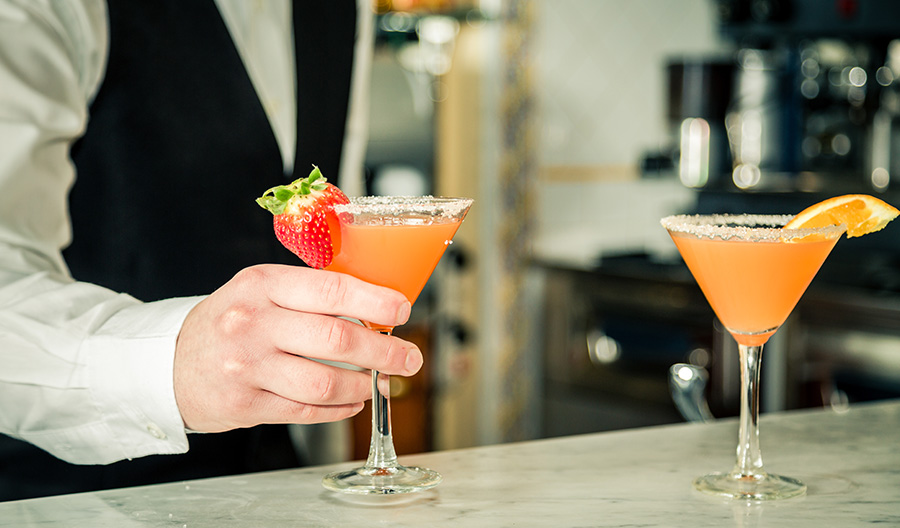Overproof alcohol may throw your taste buds back to college days when shots of rum and vodka were a sure path to a fiery night. But high-proof spirits—bottles that skyrocket far past the standard 40% ABV—increasingly are appealing to bartenders. The amped-up ABV acts as a strong backbone in a cocktail, adding a richer mouthfeel and balancing out the sweeter flavors of syrups and liqueurs. Compared to their lower-proof kin, overproof (also dubbed cask- or navy-strength) spirits offer an expanded realm of flavor.
Typically, using a high-proof spirit is a little trick for bartenders to keep in their back pocket, whether they're stuck in a rut, lacking creativity or just needing to challenge themselves. Using high-proof spirits in cocktails adds a beautiful layer of texture, like heat you can physically feel. That heat brings the bold flavors of a spirit straight to the front.
The benefit of working with higher-proof spirits is that you really get to educate yourself about their endless possibilities. The flavors force you out of your comfort zone with their strength and aggressive flavor profiles. They can completely alter any drink with just a mere float.
But with that in mind, higher-ABV spirits can be fiery. Done incorrectly, the big alcohol flavors can put yourself and your guest in the fetal position, begging for water.
Underrated Overproof Bottles
The variety of high-proof spirits is vast. There are gins, vodkas, whiskeys and rums that often reach well over 100 proof.
Absinthe, which can reach nearly 150 proof, is a classic and quintessential spirit; it elevates so many drinks to the next level. Plus, it draws you into wanting to know more about the history behind it and really starts up a conversation.
A bourbon and rye combination (both 101 proof) have long been the benchmark for bartenders to use. Using rye is great, but bourbon is a noble substitute if the drink needs something overproof. A popular example of this is the Manhattan. When customers prefer more vermouth, its best to use a high-proof whiskey to take the lead.
A Balancing Act
With higher-proof spirits, either people don’t know how to drink them or bartenders don’t know how to use them. You don’t want a drink to burn like you’re taking a straight shot.
There’s also the cost. Typically, the most balanced high-proof spirits are sometimes cost-prohibitive in a cocktail program.
Plus, bartenders need to anticipate that some customers might not be accustomed to the sharper flavors of an overproof spirit. Even when we create a very balanced drink with a higher-proof liquor, they can at times be a little polarizing with guests who are not used to having the base spirits shine through in a drink.
This can be navigate by splitting the base in cocktails, cutting apple brandy with whiskey or using vermouth and fortified wine to make a Reverse Manhattan of two parts vermouth to one part whiskey.
Using a higher-proof spirit in tropical cocktails such as the Mai Tai and Piña Coladas helps balance the sugar content and transforms a drink usually considered to be a fruit-punch-like, umbrella-adorned beverage to a more sophisticated one.


